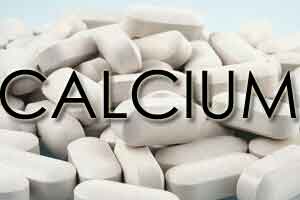- Home
- Editorial
- News
- Practice Guidelines
- Anesthesiology Guidelines
- Cancer Guidelines
- Cardiac Sciences Guidelines
- Critical Care Guidelines
- Dentistry Guidelines
- Dermatology Guidelines
- Diabetes and Endo Guidelines
- Diagnostics Guidelines
- ENT Guidelines
- Featured Practice Guidelines
- Gastroenterology Guidelines
- Geriatrics Guidelines
- Medicine Guidelines
- Nephrology Guidelines
- Neurosciences Guidelines
- Obs and Gynae Guidelines
- Ophthalmology Guidelines
- Orthopaedics Guidelines
- Paediatrics Guidelines
- Psychiatry Guidelines
- Pulmonology Guidelines
- Radiology Guidelines
- Surgery Guidelines
- Urology Guidelines
High dietary calcium in men associated with increased mortality

High dietary calcium in men—not women—was associated with increased all-cause mortality, according to a new study.
The findings, published in the journal Archives of Osteoporosis are in contrary to a similar study conducted in Swedish women.
The association of dietary calcium (Ca) with mortality is controversial. A study of women from the Swedish Mammography Cohort (SMC) suggested higher calcium was associated with higher mortality risk, whilst a study of Australian adults from the Melbourne Collaborative Cohort Study (MCCS) suggested higher intakes were associated with lower mortality risk.
Alexander J. Rodríguez, Monash University, Clayton, Australia, and colleagues conducted the study to perform a sex-specific re-analysis of the MCCS to evaluate the association of dietary Ca with mortality outcomes and directly compare hazard estimates in women with those from the SMC.
A prospective cohort study of community-dwelling Australian adults was conducted, in which 34,627 individuals were included at baseline after excluding those with prevalent cardiovascular (CV) disease, cancer or incomplete data. Energy-adjusted dietary calcium was categorized into the following levels of consumption (mg/day): < 600, 600–999, 1000–1399 and ≥ 1400. Mortality from all-causes, any cardiovascular disease, and myocardial infarction was determined. Mortality hazards relative to intakes were estimated to be of 600–999 mg/day.
Key Results:
- In women, hazard estimates for calcium intake of ≥ 1400 mg/day did not reach significance for all-cause (HR = 0.85; 0.66, 1.10) or CV (HR = 1.10; 0.69, 1.81) mortality in adjusted models.
- In men, intakes of ≥ 1400 mg/day were associated with a 42% increased all-cause mortality risk (HR = 1.42; 1.02, 1.99).
- There was a trend toward increased CV mortality (HR = 1.83; 0.94, 3.55).
"Contrary to findings from a similar study conducted in Swedish women, Australian women, after adjustment for cofounders showed no increase in mortality risk with high calcium intakes possibly reflecting differences in calcium handling dynamics, diet or lifestyle factors between the two countries," concluded the authors.
For more information log on to https://doi.org/10.1007/s11657-018-0518-5

Disclaimer: This site is primarily intended for healthcare professionals. Any content/information on this website does not replace the advice of medical and/or health professionals and should not be construed as medical/diagnostic advice/endorsement or prescription. Use of this site is subject to our terms of use, privacy policy, advertisement policy. © 2020 Minerva Medical Treatment Pvt Ltd